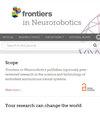人类技能知识指导下的全局轨迹策略强化学习法
IF 2.6
4区 计算机科学
Q3 COMPUTER SCIENCE, ARTIFICIAL INTELLIGENCE
引用次数: 0
摘要
基于模仿学习(IL)的传统轨迹学习方法只能从人类示范中学习已有的轨迹知识。这样,它就无法通过与环境交互和微调策略来使轨迹知识适应任务环境。为解决这一问题,本文提出了一种全局轨迹学习方法,将 IL 与强化学习(RL)相结合,使知识策略适应环境。本文提出通过 IL 获取基本轨迹技能,然后通过 RL 学习代理探索和利用更多适用于当前环境的策略。基本轨迹技能包括知识策略和整个任务空间的时间阶段信息,以帮助学习轨迹的时间序列,并用于指导后续的 RL 过程。值得注意的是,在 RL 过程中,神经网络并不是用来模拟 RL 的行动策略和 Q 值的。相反,它们在整个任务空间中进行采样和更新,然后通过行为克隆(Behavior Cloning,BC)在 RL 过程后转移到网络中,从而获得连续、平滑的全局轨迹策略。该方法的可行性和有效性在定制的 Gym 环境中的花卉绘制任务中得到了验证。然后,我们在真实世界的机器人绘制实验中执行了学习到的策略。本文章由计算机程序翻译,如有差异,请以英文原文为准。
Human skill knowledge guided global trajectory policy reinforcement learning method
Traditional trajectory learning methods based on Imitation Learning (IL) only learn the existing trajectory knowledge from human demonstration. In this way, it can not adapt the trajectory knowledge to the task environment by interacting with the environment and fine-tuning the policy. To address this problem, a global trajectory learning method which combinines IL with Reinforcement Learning (RL) to adapt the knowledge policy to the environment is proposed. In this paper, IL is proposed to acquire basic trajectory skills, and then learns the agent will explore and exploit more policy which is applicable to the current environment by RL. The basic trajectory skills include the knowledge policy and the time stage information in the whole task space to help learn the time series of the trajectory, and are used to guide the subsequent RL process. Notably, neural networks are not used to model the action policy and the Q value of RL during the RL process. Instead, they are sampled and updated in the whole task space and then transferred to the networks after the RL process through Behavior Cloning (BC) to get continuous and smooth global trajectory policy. The feasibility and the effectiveness of the method was validated in a custom Gym environment of a flower drawing task. And then, we executed the learned policy in the real-world robot drawing experiment.
求助全文
通过发布文献求助,成功后即可免费获取论文全文。
去求助
来源期刊

Frontiers in Neurorobotics
COMPUTER SCIENCE, ARTIFICIAL INTELLIGENCER-ROBOTICS
CiteScore
5.20
自引率
6.50%
发文量
250
审稿时长
14 weeks
期刊介绍:
Frontiers in Neurorobotics publishes rigorously peer-reviewed research in the science and technology of embodied autonomous neural systems. Specialty Chief Editors Alois C. Knoll and Florian Röhrbein at the Technische Universität München are supported by an outstanding Editorial Board of international experts. This multidisciplinary open-access journal is at the forefront of disseminating and communicating scientific knowledge and impactful discoveries to researchers, academics and the public worldwide.
Neural systems include brain-inspired algorithms (e.g. connectionist networks), computational models of biological neural networks (e.g. artificial spiking neural nets, large-scale simulations of neural microcircuits) and actual biological systems (e.g. in vivo and in vitro neural nets). The focus of the journal is the embodiment of such neural systems in artificial software and hardware devices, machines, robots or any other form of physical actuation. This also includes prosthetic devices, brain machine interfaces, wearable systems, micro-machines, furniture, home appliances, as well as systems for managing micro and macro infrastructures. Frontiers in Neurorobotics also aims to publish radically new tools and methods to study plasticity and development of autonomous self-learning systems that are capable of acquiring knowledge in an open-ended manner. Models complemented with experimental studies revealing self-organizing principles of embodied neural systems are welcome. Our journal also publishes on the micro and macro engineering and mechatronics of robotic devices driven by neural systems, as well as studies on the impact that such systems will have on our daily life.
 求助内容:
求助内容: 应助结果提醒方式:
应助结果提醒方式:


